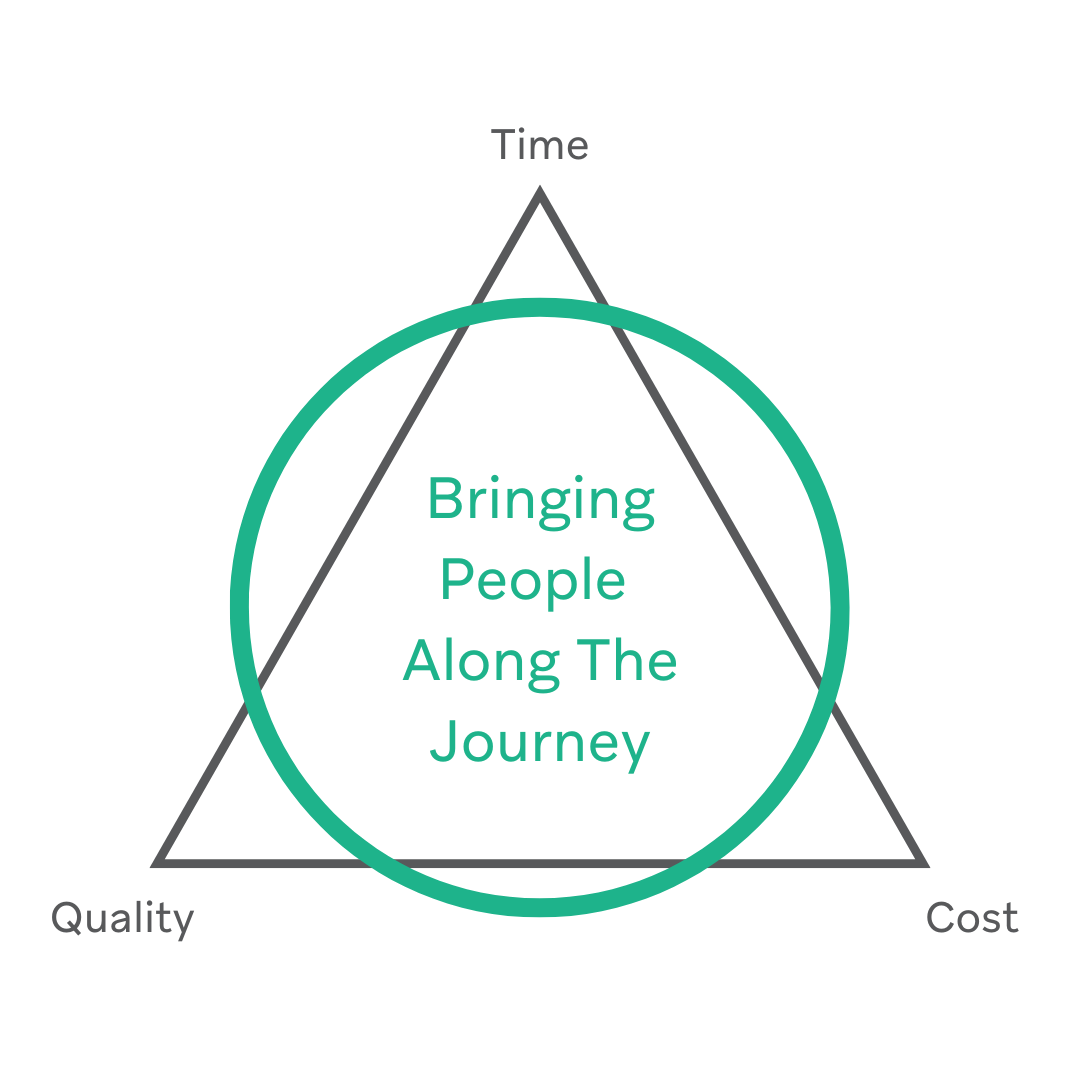Maximising Project Success Through People Return on Investment
As project managers, we often focus on delivering projects on time, within budget, and to the expected quality standards. However, an often-overlooked aspect of project success is the engagement and involvement of the people who will ultimately use the project’s outcomes. Let’s delve into why taking people on the project journey is so crucial and how it directly impacts the return on investment (ROI).
Why Calculate Return on Investment?
Understanding ROI is fundamental in project management. ROI measures the efficiency of an investment by comparing the return to the cost of the investment. In simple terms, it helps determine whether a project is financially worthwhile. For project managers, calculating ROI provides clear insights into the project’s financial performance and justifies the resources allocated.
Why Is Return On Investment Good?
ROI is a critical metric because it quantifies the financial benefits of a project relative to its costs. A good ROI indicates that the project is profitable and the resources invested are yielding positive returns. For businesses, a strong ROI means better financial health and growth prospects. Therefore, ensuring a good ROI is essential for the long-term success of any project.
The Importance Of People In Project Success
Here’s a compelling fact:
“70% of projects fail to meet their ROI if the people are not engaged along the way. This statistic highlights a vital concept – People Return on Investment (PROI). PROI is directly linked to the project’s overall ROI, particularly in projects that create products or services for direct use by people. ”
What Is Return on Investment in Project Management and How to Calculate It?
In project management, ROI is calculated by dividing the net benefits of the project (total benefits minus total costs) by the total costs and then multiplying by 100 to get a percentage. The formula is:
A positive ROI means the project is generating more value than it costs, which is crucial for project justification and stakeholder buy-in.
Crafting a Business Change Plan with People in Mind
A business change plan should always include success criteria that consider user engagement and adoption. Ask yourself, how often do your project success criteria relate to uptake, increase, or usage? In many project closure meetings, these success metrics are not met efficiently due to a lack of people engagement.
To illustrate this, let’s consider a hypothetical property development project.
Engaging People: A Property Development Example
Imagine you are a property developer investing £2 million in a new housing project, expecting to start selling houses on January 1st, the project’s “Go Live” date. Here’s how focusing on people can ensure success:
1. Understanding your area
Engage with local residents to understand their needs. If the area has many families, you might need to build houses or community buildings. For areas with working professionals, flats might be more appealing.
Create, design, and market properties that meet these needs.
2. Early Advertising:
Use billboards at the building site, local newspaper ads, online search engines, and property search websites to generate interest early.
3. Show Homes:
Set up show homes to showcase the quality and finish, creating a desire for potential buyers.
4. Buyer Information:
Provide buyers with all the information they need about mortgages and the buying process to facilitate their decision to purchase.
If these steps are followed, people will buy the properties off-plan, and your ROI will be realised from the start of the Go Live date.
The Consequences of Neglecting People Engagement
Now, imagine skipping these steps. The properties are ready on January 1st, but without engaging potential buyers, no homes are sold. Starting the marketing and engagement efforts after the Go Live date delays your ROI, pushing it months beyond the expected date. This scenario clearly shows that the ROI is directly linked to people’s engagement and involvement.
How to Measure Return on Investment
Measuring ROI involves tracking the financial benefits and costs associated with a project. For accurate measurement, consider both tangible and intangible benefits. Tangible benefits include increased revenue and cost savings, while intangible benefits may encompass improved customer satisfaction and employee engagement.
Why People Engagement Matters
For any project that creates something to be directly used by people, the impact of user engagement on the project’s success cannot be overstated. You might develop the best solution that saves time, reduces risks, and improves well-being, but if people don’t know about it, understand its benefits, or know how to use it, your project’s solution becomes worthless.
Taking People on Your Project Journey
To ensure your project’s true success and maximise ROI, it’s essential to take people on the project journey. Engage them early, understand their needs, communicate effectively, and provide the necessary support and information. This approach not only enhances user adoption but also ensures that the project’s benefits are realised, thereby improving the overall return on investment.
In conclusion, integrating People Return on Investment into your project management strategy is crucial. By focusing on user engagement and involvement, you can significantly enhance the success rate of your projects and achieve your ROI targets more effectively.
Together, let’s take people on your project’s journey and improve your true project’s success and return on investment
〰️
Together, let’s take people on your project’s journey and improve your true project’s success and return on investment 〰️
Want to know how you maximise your people return on investment?
Join our online course taking you though our easy-to-follow and simple change model.





